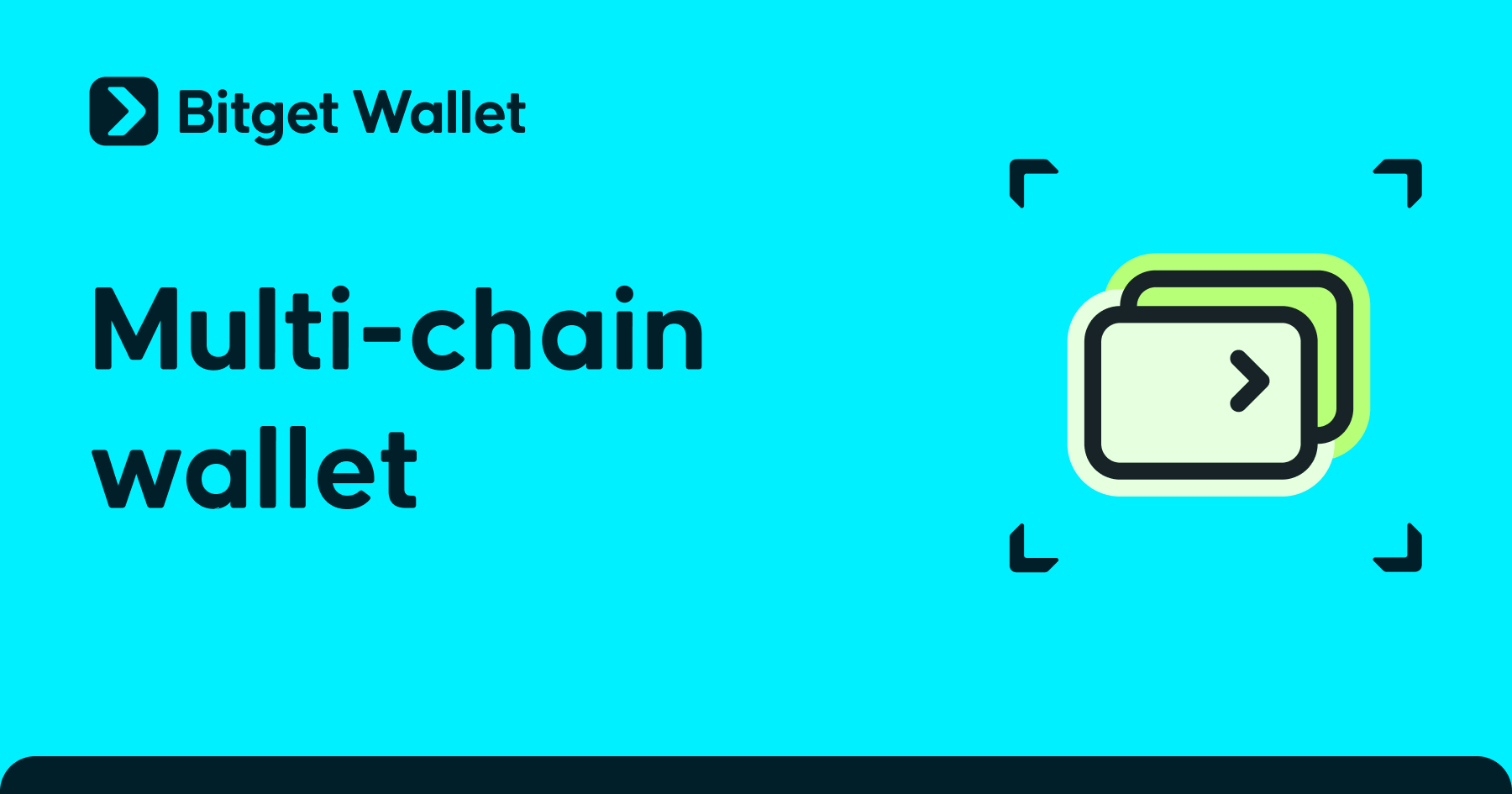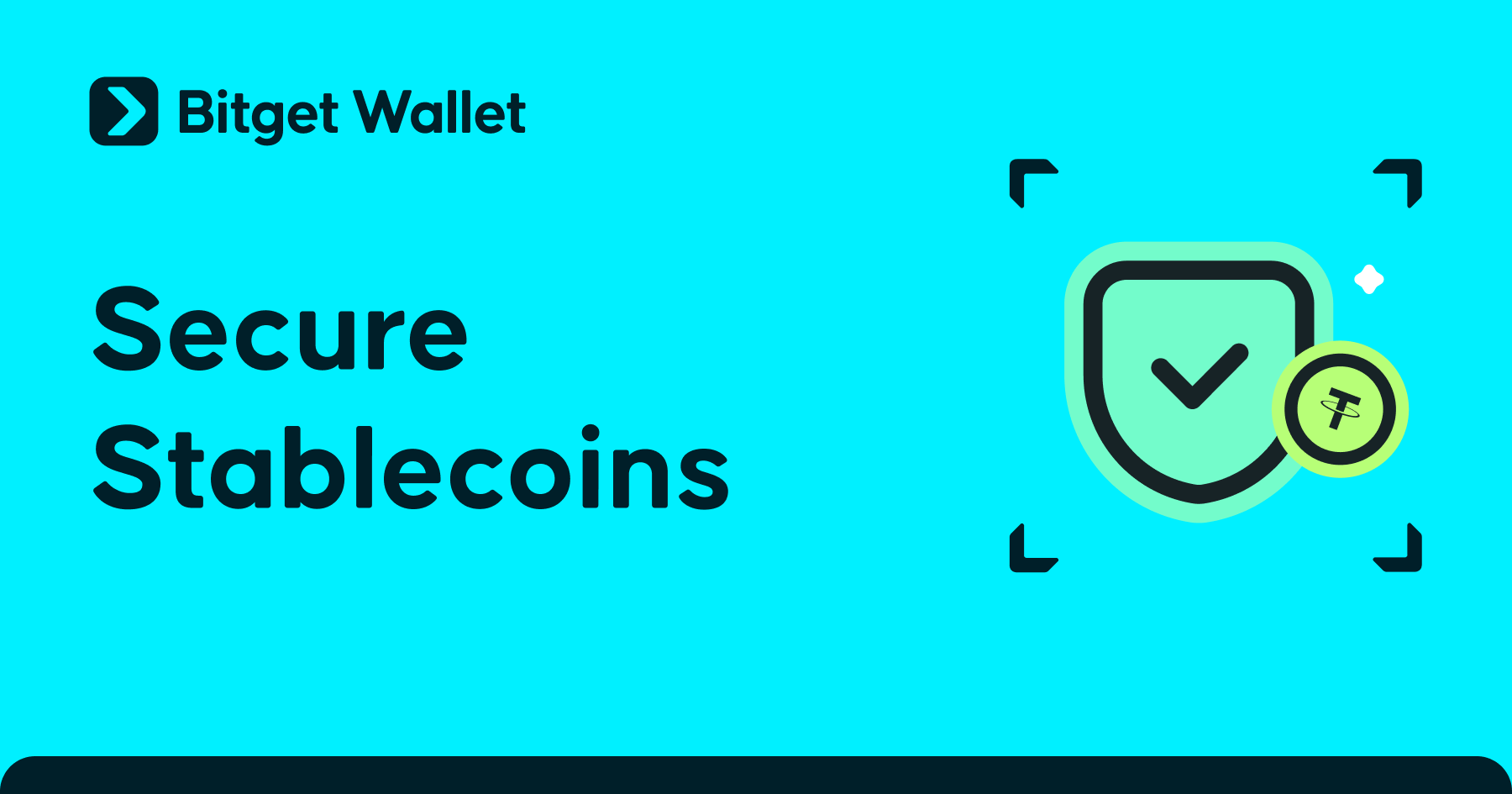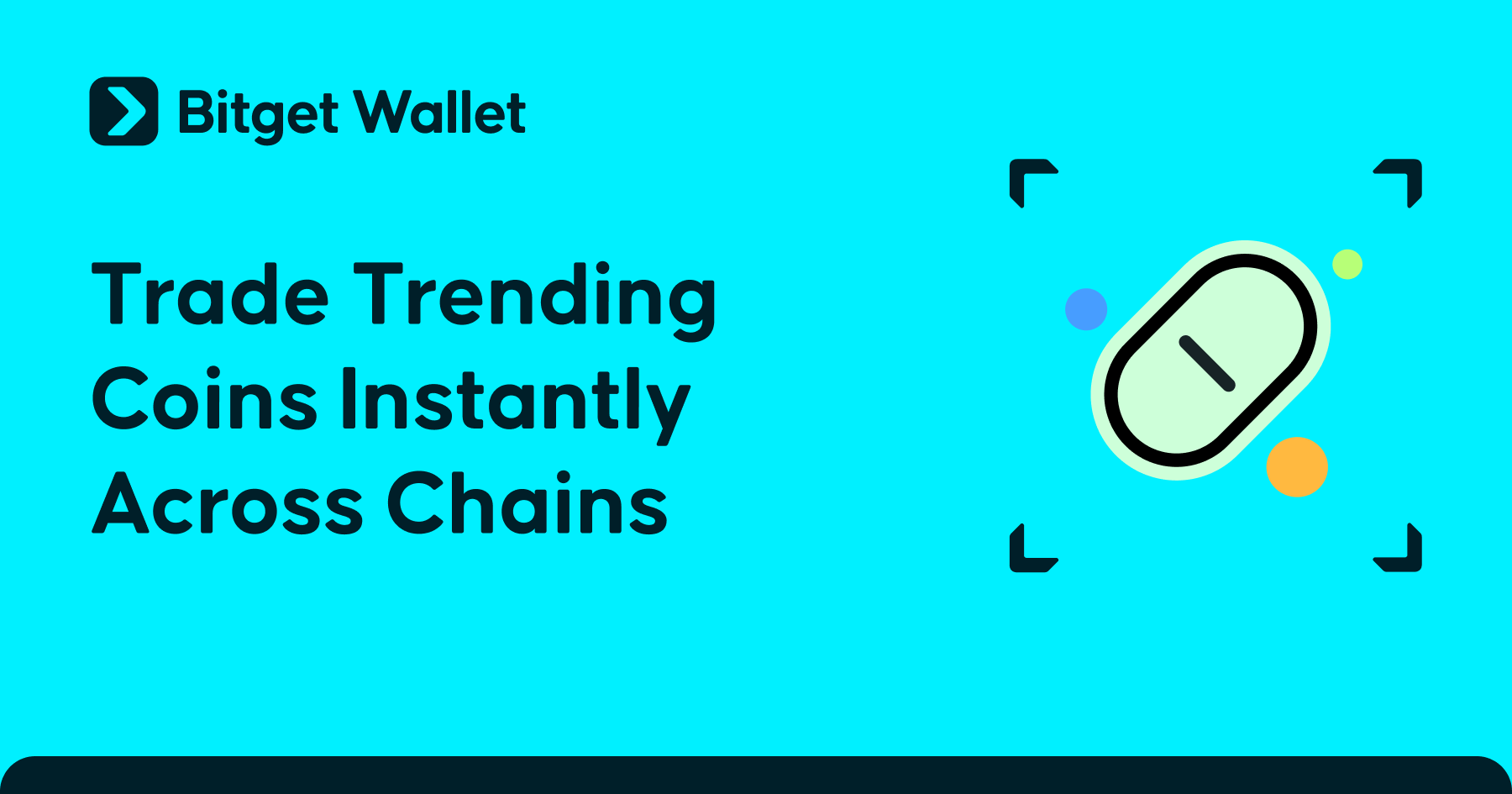What Is a Cross Chain Crypto Wallet? A Beginner’s Guide to Multi-Chain Asset Management
What is cross chain crypto wallet and why is it redefining digital finance?
A cross-chain crypto wallet is a multi-chain tool that lets users store, send, receive, and swap digital assets across multiple blockchains — all from one secure interface. Instead of managing separate wallets for Bitcoin, Ethereum, or Solana, a cross-chain wallet unifies them into a single, easy-to-use hub.
This evolution stems from blockchain interoperability — the technology that allows different networks to communicate. It solves crypto’s long-standing “silo” problem, giving users seamless access to DeFi, NFTs, and stablecoins without switching apps or using bridges.
Modern multi-chain wallets like Bitget Wallet make this process effortless, combining enterprise-grade security with instant access to 130+ networks.
In this guide, we’ll explore how cross-chain wallets work, their benefits, the difference between cross-chain and multi-chain wallets, and how to create your first wallet with Bitget Wallet.
Key Takeaways
- Cross-chain crypto wallets enable seamless transfers and swaps across multiple blockchains.
- They simplify multi-chain asset management, offering a single dashboard for crypto, NFTs, and DeFi.
- Bitget Wallet merges seed-phrase and MPC (keyless) technology for maximum security and convenience.
What is cross chain crypto wallet and how does it work?
A cross-chain crypto wallet supports multiple blockchains and enables interaction between them, allowing users to manage all assets within one application.
What Makes a Wallet ‘Cross-Chain’?
Unlike traditional wallets that work on a single network, a cross-chain wallet integrates interoperability protocols that connect blockchains directly.
It can support various consensus mechanisms — Proof-of-Work, Proof-of-Stake, or Proof-of-History — and unify them under one interface.
For example, you can store and move tokens between Bitcoin, Ethereum, Polygon, Arbitrum, Solana, and many others instantly within Bitget Wallet.
How Does a Cross Chain Crypto Wallet Work Behind the Scenes?
Cross-chain wallets connect to blockchains using RPC nodes, API integrations, and smart contracts.
When a user initiates a swap, the wallet automatically finds the most efficient route through integrated DEX aggregators, ensuring fast, secure, and low-cost transactions.
Everything happens seamlessly — no bridges, no extra apps, and no manual switching.
What Are the Main Benefits of Using a Cross Chain Crypto Wallet?
A cross-chain wallet delivers both practicality and performance improvements for everyday crypto users.
How Does It Simplify Asset Management?
A multi-chain crypto wallet offers one unified dashboard where users can view and manage all their holdings — from tokens to NFTs and stablecoins — across different blockchains.
It eliminates the need for multiple extensions or wallets, while real-time portfolio tracking provides a complete view of your crypto wealth in one place.
Can a Cross Chain Wallet Save on Fees and Time?
Yes. Cross-chain wallets optimize transfers by automatically selecting lower-fee networks such as Polygon, Base, or Arbitrum.
This saves both time and transaction costs compared to traditional transfers or third-party bridges.
Transactions happen in a single click, without sacrificing security or decentralization.
Does It Improve DeFi Accessibility and Security?
Understanding what is cross chain crypto wallet also means knowing how it powers DeFi and on-chain swaps.
When discussing what is cross chain crypto wallet, safety is the top concern for most users.
A cross-chain DeFi wallet lets users connect to decentralized applications on any supported network through one secure login.
Security is reinforced with multi-layer encryption, PIN protection, and optional MPC technology for keyless access.
In Bitget Wallet, users can choose between a seed phrase wallet for full control or an MPC wallet for cloud-secured convenience — both built for self-custody.
What’s the Difference Between Cross Chain and Multi-Chain Crypto Wallets?
The two terms are often used interchangeably, but they describe different scopes of functionality.
Are They the Same Thing?
A multi-chain wallet supports assets across several blockchains but doesn’t necessarily allow transactions between them.
A cross-chain wallet, like Bitget Wallet, goes further — enabling asset transfers, swaps, and DeFi interactions across multiple networks directly within the app.
This is true interoperability: storage, transfer, and DeFi participation — all unified.
Read more: What Is Cross Chain Swap
Why Does This Difference Matter for Users?
For active traders and DeFi enthusiasts, cross-chain capability removes friction and improves liquidity access.
You can, for instance, swap USDT from Ethereum to Arbitrum or Solana instantly without leaving the wallet.
This flexibility defines the modern cross-chain crypto wallet experience.
How to Create Your First Cross Chain Crypto Wallet (Step-by-Step)
To set up your first Bitget Wallet, open the app and follow these simple steps.
Step 1 — Set Your Wallet Passcode
When you open Bitget Wallet, tap “Create Wallet.” You’ll be prompted to set a wallet PIN, a six-digit passcode linked to your device.
This PIN authorizes transactions and protects your wallet. It is different from your seed phrase or private key, so make sure to remember it.
⚠️ If you forget the PIN, you’ll need to reinstall the app and re-import your wallet using your seed phrase or private key. Always back up your wallet early to avoid permanent loss.
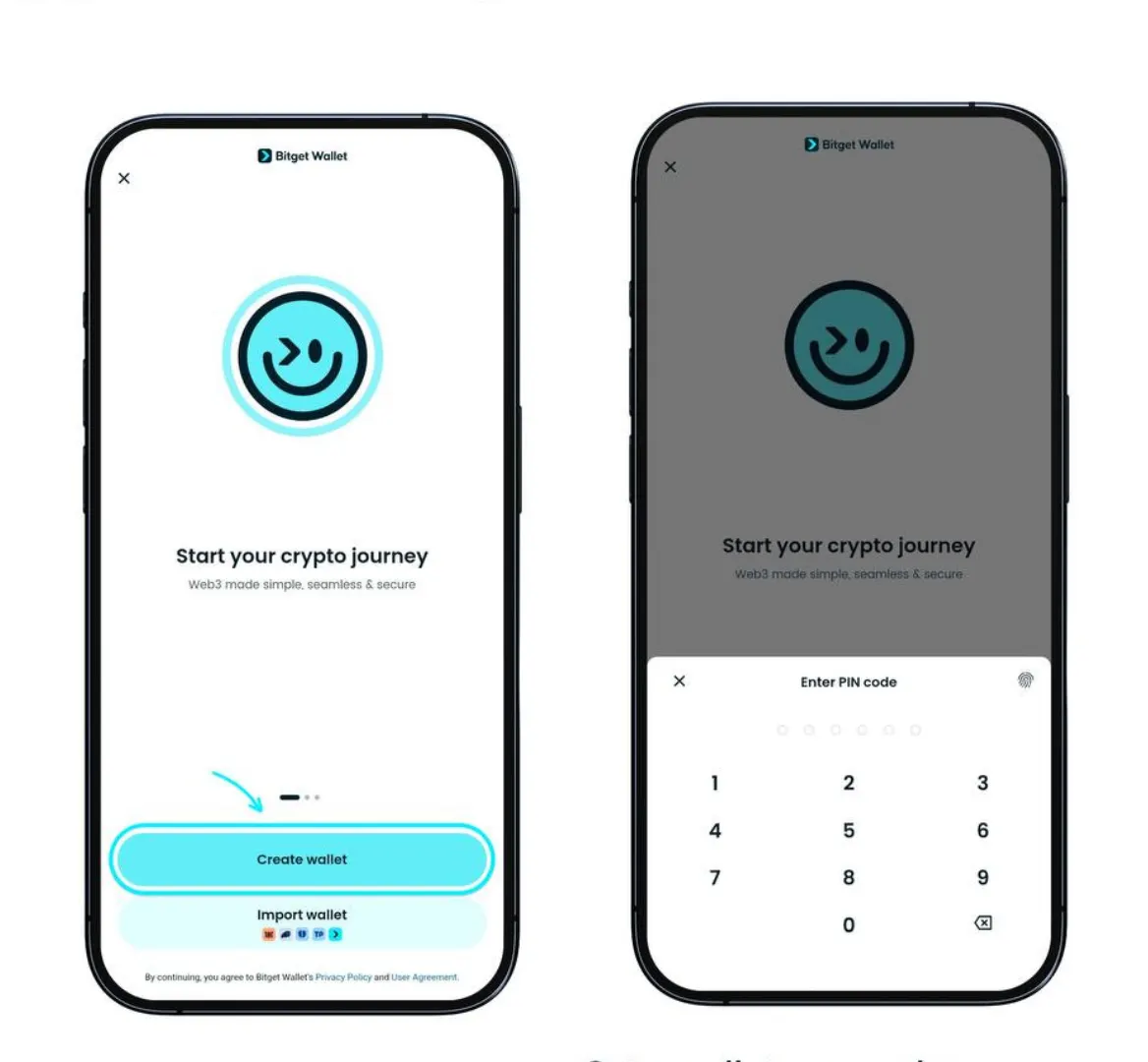
This step establishes the first layer of protection for your cross-chain crypto wallet.
Step 2 — Create Your First Seed Phrase Wallet
After setting your PIN, Bitget Wallet automatically generates your first seed phrase wallet.
Tap “Back up now” and follow the prompts to record your seed phrase — a 12- or 24-word recovery key that grants full access to your wallet.
Your seed phrase is the master key that allows you to restore your multi-chain wallet on any device if your phone is lost or reset.
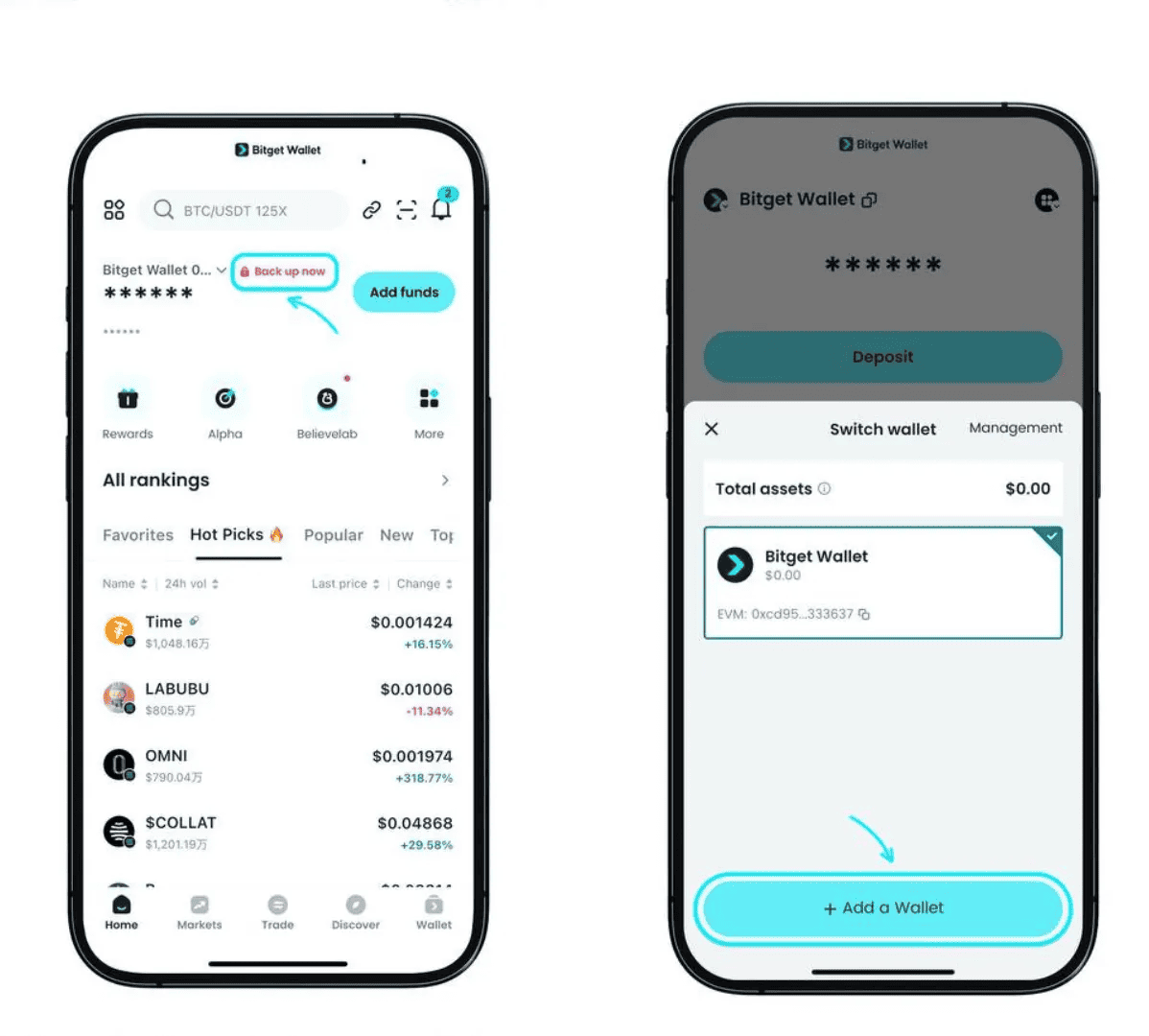
🔒 Never share or screenshot your seed phrase. Store it securely offline in a private location.
Step 3 — Choose Your Wallet Type (Seed Phrase vs MPC)
You can create additional wallets and choose between two formats:
- Seed Phrase Wallet: A self-custody option where you hold your own private keys.
- Keyless Wallet (MPC Wallet): Uses your Google or Apple login for secure, cloud-based key management — no manual backup required.
For beginners, the keyless wallet (MPC wallet) offers convenience and simplicity.
For experienced users, the seed phrase wallet ensures full control and direct ownership of all keys.
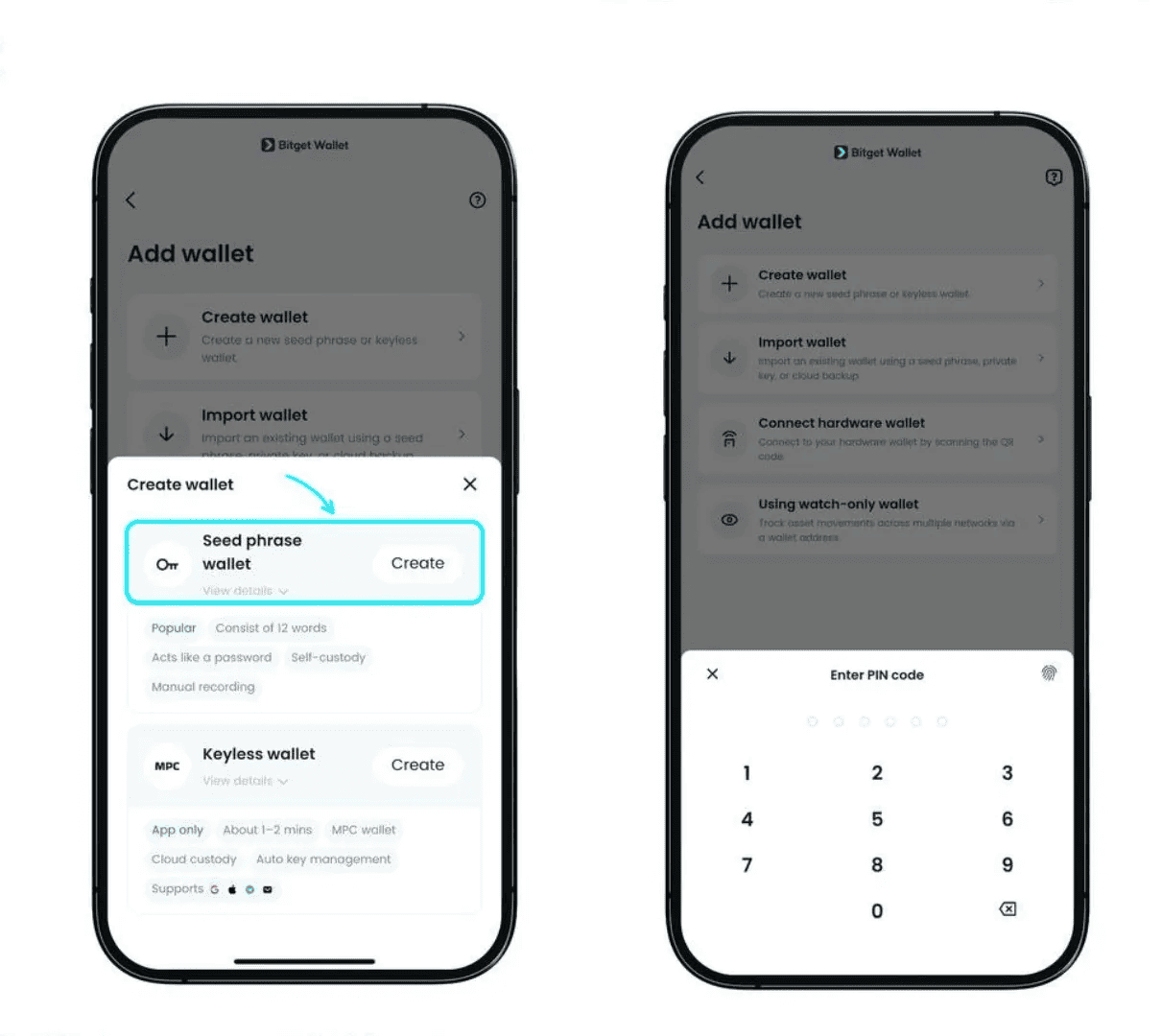
Both options operate seamlessly within the Bitget Wallet interface, giving you flexible control inside one cross-chain crypto wallet.
Step 4 — Switch Between Wallets or Create More
To manage multiple portfolios, tap the wallet icon and select “Add Wallet.”
You can create, rename, and switch between wallets — whether for personal use, DeFi participation, or NFT storage — all within one multi-chain wallet environment.
Tap the wallet name at the top of the screen to switch between accounts instantly.
This feature allows you to organize assets easily while maintaining complete control through Bitget Wallet.
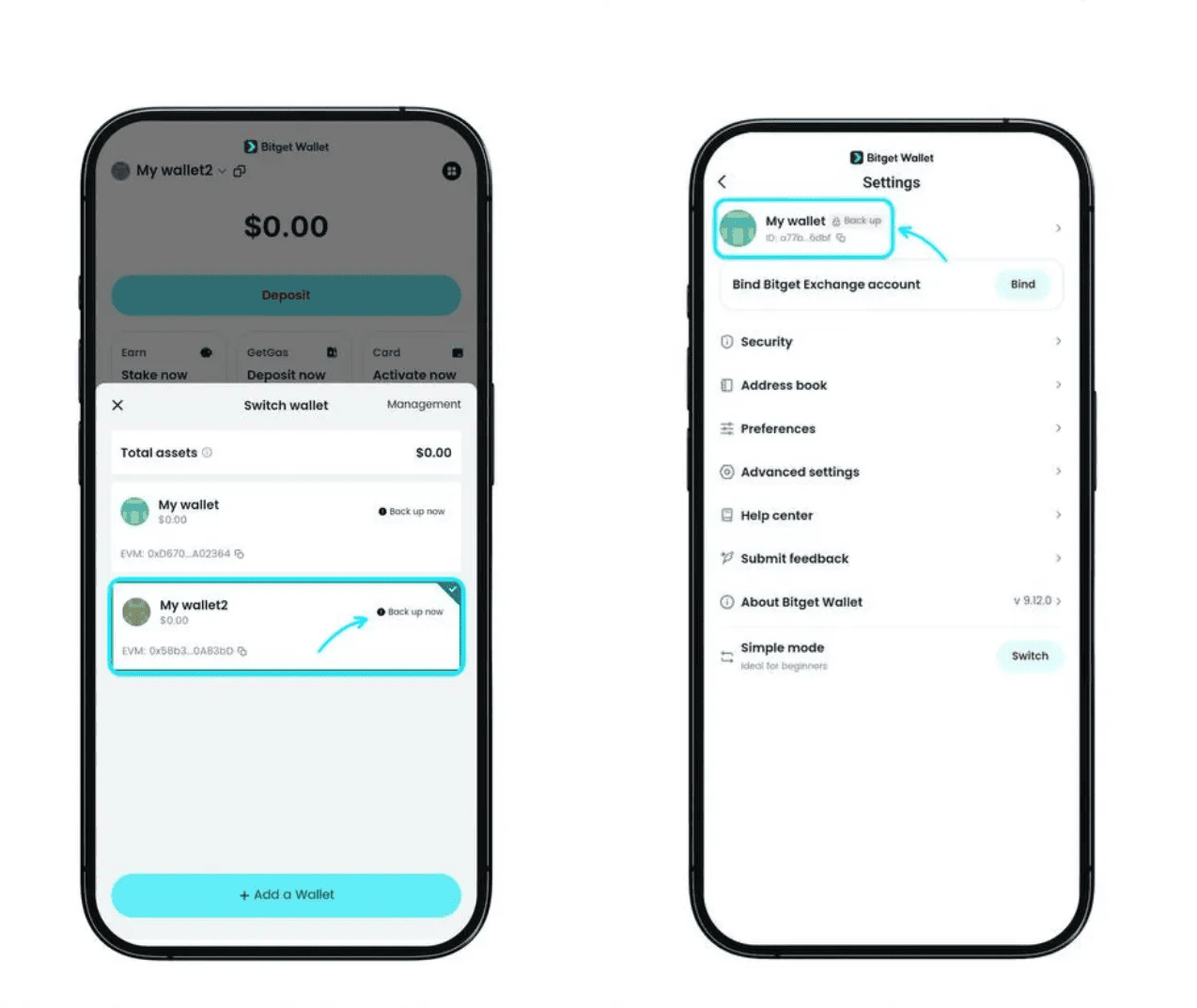
That’s it — your Bitget Wallet is now set up and ready for multi-chain use.
You can securely manage, send, and swap assets across more than 130 blockchains from one streamlined, user-friendly app.
How Safe Are Cross Chain Crypto Wallets?
What Are the Common Security Practices?
Cross-chain wallets like Bitget Wallet prioritize self-custody.
Security measures include biometric verification, PIN encryption, multi-signature authorization, and MPC technology.
Only you hold access to your funds — not a third party.
What Are the Risks of Losing Your PIN or Seed Phrase?
If you lose your seed phrase before backing up, your wallet cannot be recovered.
Always write it down, store it offline, and never keep it in cloud storage.
So, is cross chain wallet safe?
Yes — as long as you control your keys and use the official Bitget Wallet app.
How to Use a Cross Chain Wallet for Swaps and DeFi Access
How Do Cross Chain Swaps Work in Practice?
Bitget Wallet allows you to trade over 1 million tokens across 130+ blockchains instantly.
Its built-in DEX aggregator automatically finds the best liquidity route and executes cross-chain swaps through smart contracts.
You can swap ETH to SOL or USDC to BNB in seconds, with transparent pricing and no bridges required.
Read more: How to Swap Tokens on Bitget Wallet: A Beginner's Guide
What Can You Do With DeFi Using Cross Chain Wallets?
Connect to your favorite DeFi platforms directly from Bitget Wallet — stake, yield farm, lend, or trade NFTs effortlessly.
As a cross-chain DeFi wallet, Bitget unlocks access to opportunities across all major networks without leaving the app.
Why Is Bitget Wallet the Best Cross Chain Crypto Wallet for Beginners?
How Does Bitget Wallet Simplify Multi-Chain Asset Management?
Bitget Wallet is an all-in-one crypto wallet for DeFi, stablecoins, and NFTs.
It supports Ethereum, Solana, BNB Chain, Polygon, Base, and Arbitrum, combining high performance with intuitive design.
Key features include:
- Seamless cross-chain swaps
- Secure MPC and seed phrase wallet options
- Unified multi-chain dashboard for all assets
- Stablecoin Earn+ with up to 10% APY
How to Start Your Crypto Journey with Bitget Wallet
Follow the eight-step setup, secure your backup, and begin managing assets confidently.
With cross-chain interoperability, multi-layer security, and a beginner-friendly UI, Bitget Wallet gives you everything you need to thrive in DeFi.
Download Bitget Wallet today to manage, swap, and grow your crypto across all major blockchains — safely and effortlessly.
Conclusion
What is cross chain crypto wallet technology, and why does it matter?
It marks the shift toward a fully interoperable blockchain ecosystem — one where users control assets across all networks seamlessly.
By combining security, efficiency, and DeFi accessibility, cross-chain wallets empower true financial independence.
For both beginners and advanced users, Bitget Wallet remains the most trusted, beginner-friendly gateway to cross-chain asset management.
Start your journey today — download Bitget Wallet and experience the future of decentralized finance.
FAQs
1. What is cross chain crypto wallet?
A cross chain crypto wallet, or simply what is cross chain crypto wallet, is a secure Web3 tool that lets you store, send, and swap cryptocurrencies across multiple blockchains from one interface. It removes the need for separate wallets, giving users seamless control over all their assets in a single multi-chain dashboard like Bitget Wallet.
2. How does a cross chain crypto wallet work?
It connects to various blockchains via RPC nodes and smart contracts to handle transfers automatically.
3. Is cross chain wallet safe?
Yes, if you back up your seed phrase and use secure, verified apps like Bitget Wallet.
4. What’s the difference between cross chain and multi chain wallet?
Cross-chain wallets enable swaps between blockchains; multi-chain wallets only support holding assets on several networks.
5. What is the best cross chain crypto wallet for beginners?
Bitget Wallet — trusted, easy to use, and built for seamless multi-chain DeFi.
Risk Disclosure
Please be aware that cryptocurrency trading involves high market risk. Bitget Wallet is not responsible for any trading losses incurred. Always perform your own research and trade responsibly.
- What Is Crypto Fear and Greed Index: How Traders Read Fear vs Greed Signals2025-11-19 | 5 mins
- How to Pay with Crypto: Fast, Safe, and Beginner-Friendly Method2025-11-18 | 5 mins
- How to Convert Your Crypto to Cash: 5 Easy Ways for Beginners2025-11-18 | 5 mins






